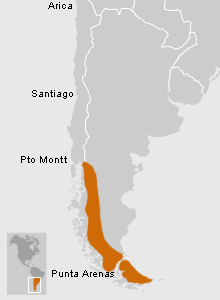These groups occupied the Andean valleys of Chilean and Argentinean Patagonia, a rugged, forest-covered land that served as a natural boundary of the western sea channels, but they mainly occupied the adjoining high tableland that slopes gradually towards the Atlantic (in Eastern Patagonia). This region of steppes covered with hardy grasses and bushes has a semi-arid climate with low temperatures and little rainfall. These inland hunters also inhabited the steppes and woodlands of the Isla Grande on Tierra del Fuego, situated south of the Strait of Magellan. In historic times, the inland hunter tradition continued in continental Patagonia amongst the Aonikenk or Tehuelche tribe, while across the Strait of Magellan on Tierra del Fuego the last survivors of this way of life were the Selk`nam or Ona people, and the virtually unknown Haush.
How to Arrive
El Museo se encuentra ubicado en pleno centro de Santiago, en la esquina de las calles Bandera y Compañía, a una cuadra de la Plaza de Armas.
Tickets
Chileans and resident foreigners: $1,000 Foreigners: $8,000 Chilean students and resident foreigners: $500 Foreign students: $4,000
Guided Visit
El Museo cuenta con un servicio de guías, sin costo adicional, para los establecimientos educacionales.
Information for Teachers
Invitamos especialmente a coordinarse con alguno de nuestros guías para programar una visita o actividades de motivación y seguimiento que aprovechen de la mejor forma la experiencia de visitarnos.
Audioguides
Download recordings of the Permanent Exhibition display texts in English, French, Portuguese and Spanish here. These audioguides are in mp3 format and are arranged by cultural area, following the same order as our exhibit galleries. Descargue desde esta página audioguías en castellano, inglés, francés y portugués con los textos de las vitrinas de la […]






































